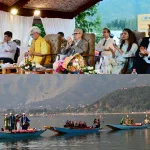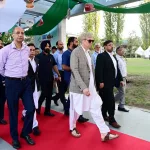From a societal level of analysis the institution of marriage represents all the behaviors, norms, roles, expectations, and values that are associated with the legal union of a man and woman. It is the institution in society in which a man and woman are joined in a special kind of social and legal dependence to found and maintain a family. For most people, getting married and having children are the principal life events that mark the passage into mature adulthood. Marriage is considered to represent a lifelong commitment by two people to each other and is signified by a contract sanctioned by the state and for many people, by God. It thus involves legal rights, responsibilities, and duties that are enforced by both secular and sacred laws.
Marriage is at the center of the kinship system. New spouses are tied inextricably to members of the kin network. The nature of these ties or obligations differs in different cultures. In Western societies, kin responsibilities rarely extend beyond the nuclear family (parents and children). There is the possible exception of caring for elderly parents, where norms seem to be developing. There are no normative obligations an individual is expected to fulfill for sisters or brothers, not to mention uncles, aunts, and cousins. Associated with few obligations and responsibilities is greater autonomy and independence from one’s kin.
In some societies the distribution of power in marriage is given through tradition and law to the male—that is, patriarchy is the rule as well as the practice. For many contemporary Western societies the ideal is to develop an egalitarian power structure, but a number of underlying conditions discourage attaining this goal. These deterrents include the tendency for males to have greater income; higher-status jobs; and, until recently, higher educational levels than women. In addition, the tradition that women have primary responsibility for child rearing tends to increase their dependency on males.
Historically, the institution of marriage has fulfilled several unique functions for the larger society. It has served as an economic alliance between two families, as the means for legitimizing marital relations, and as the basis for legitimizing parenthood and offspring. In present day America and other developed countries, the primary functions of marriage appear to be limited to the legitimization of parenthood and the nurturance of family members. Most services that were once performed by members of a family for other members can now be purchased in the marketplace, and other social institutions have taken over roles that once were assigned primarily to the family. Even illegitimacy is not as negatively sanctioned as in the past. The fact that marriage no longer serves all the unique functions it once did is one reason some scholars have questioned the vitality of the institution.
If the vitality of marriage is measured by the extent to which men and women enter marriage, then some pessimism about its future is warranted. One conclusion that might be drawn from reading the accumulated literature on marriage, especially the writings that discuss the inequities of men and women within marriage, the increasing incidence of marital dissolution, cohabitation as a substitute for marriage, and the postponement of marriage, is that the institution is in serious trouble. These changes have been interpreted as occurring as part of a larger societal shift in values and orientations that leans toward valuing adults over children and individualism over familism. Supporting this perspective are the data on increased marital happiness among childless couples and lower birth rates among married couples.
Yet every era has had those who wrote of the vulnerability of marriage and the family. For example, earlier Edward Alsworth Ross wrote, ‘we find the family now less stable than it has been at any time since the beginning of the Christian era’. Is every era judged to be worse than previous ones when social institutions are scrutinized? More optimistic scholars look at the declining first marriage rate and interpret it as a ‘deferral syndrome’ rather than an outright rejection of the institution. This is because, in spite of declines in the overall rate, the historical eight percent to ten percent of never married people in the population has remained constant. In spite of the high divorce rate, an increased tolerance for singleness as a way of life, and a growing acceptance of cohabitation, majority of people across the globecontinue to marry. Marriage is still seen as a source of personal happiness
More fundamentally, marriage rates and the dynamics of marital relationships tend to reflect conditions in the larger society. What appears clear, at least for developed nations, is that they turn to marriage as a source of sustenance and support in a society where, collectively, citizens seem to have abrogated responsibility for the care and nurturance of each other. Perhaps it is not surprising that divorce rates are high, given the demands and expectations placed on modern marriages.
(The Author is PhD in Sociology and a columnist)





